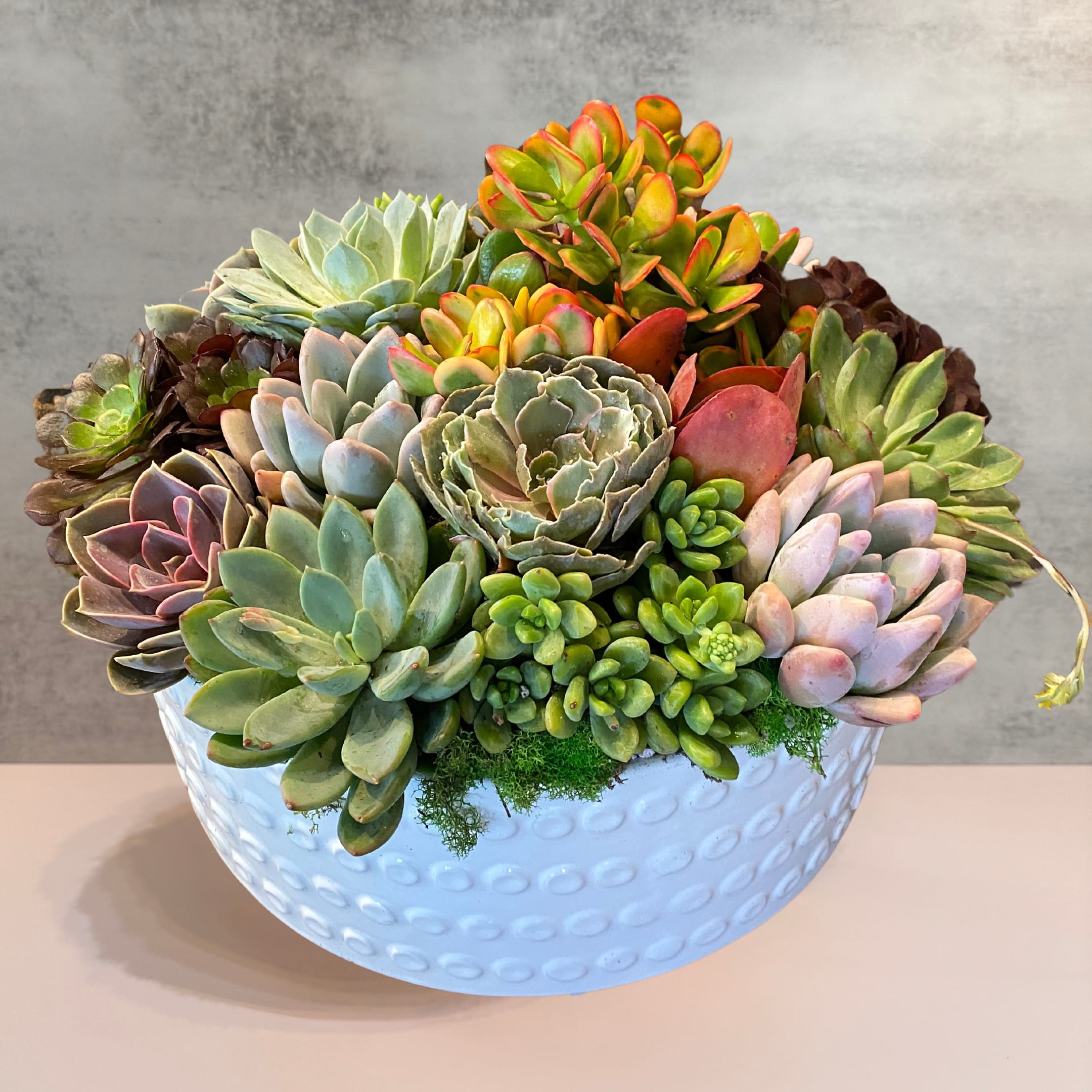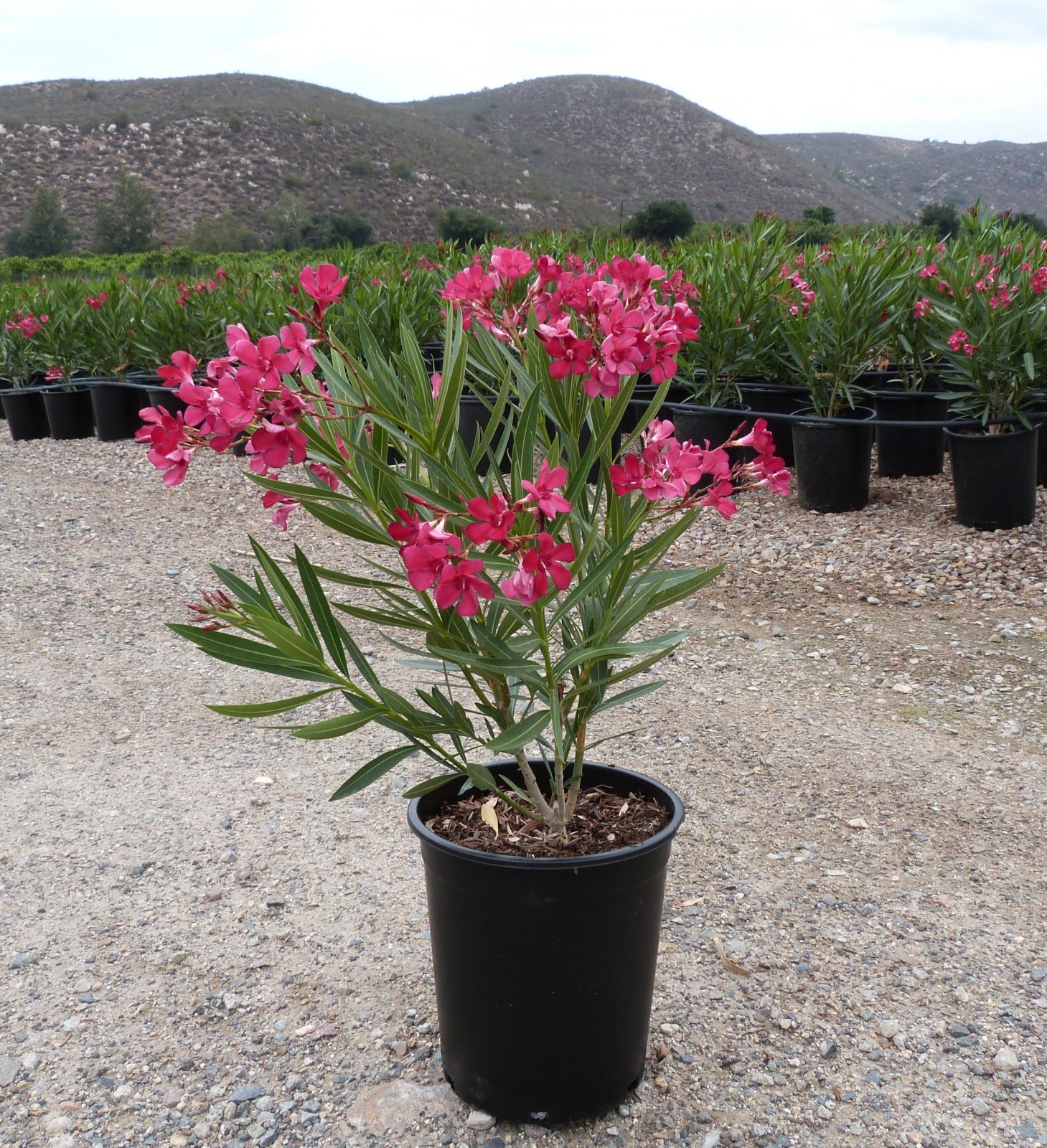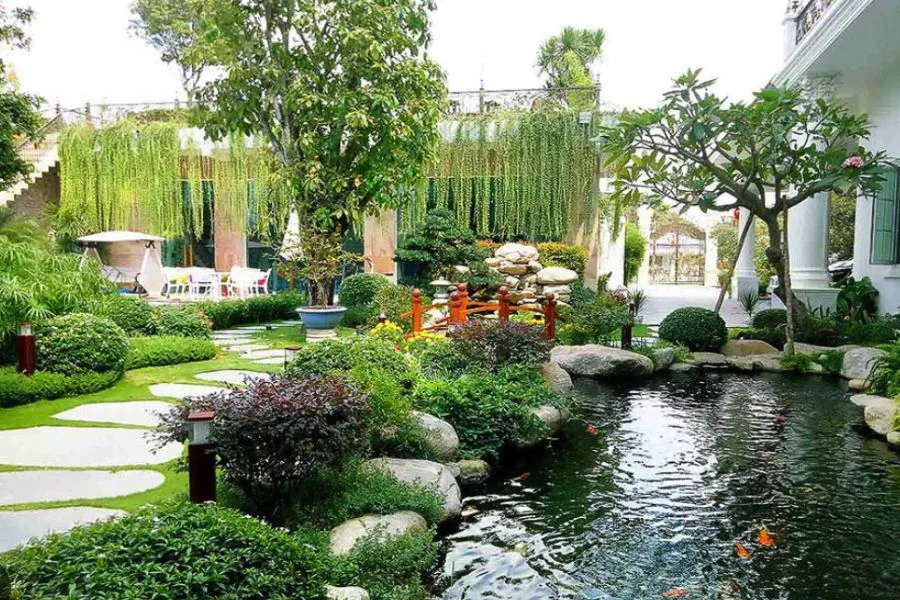News
8 Sun-Loving Plants Perfect for Decorating Rooftops and Balconies
Introduction
For homeowners and apartment dwellers alike, rooftops and balconies are prized outdoor spaces — little pockets of sky where you can relax, entertain, or grow something beautiful. Yet intense sunlight, wind, and limited soil depth can make these areas challenging for greenery. Choosing the right species is essential to avoid scorched leaves and constant replacement.
If you’re searching for [main keyword], you’re in the right place. This guide introduces eight sun-loving plants perfect for decorating rooftops and balconies, explaining their key benefits, care tips, and design ideas. With the right choices, you can transform even the hottest outdoor corners into lush, welcoming retreats.
Why Sun-Tolerant Plants Are Essential
Coping With Intense Light and Heat
Rooftops and balconies receive more direct sunlight than ground-level gardens. Ordinary indoor plants often burn or wilt under such conditions. By selecting species adapted to high light and heat, you minimize maintenance and enjoy healthier, more vibrant greenery.
Adding Green Comfort to Urban Spaces
Sun-tolerant plants soften hard surfaces, absorb heat, and create shade. They also improve air quality and provide a calming visual break from concrete and glass. In dense cities, your balcony garden becomes a mini-oasis that benefits both you and passing pollinators.
Bougainvillea
Why It Thrives on Rooftops and Balconies
Bougainvillea is a classic choice for hot, sunny spaces. Its vibrant bracts (often mistaken for flowers) explode in shades of magenta, orange, or white throughout the warm months. This plant not only tolerates but flourishes in full sun and poor soils, making it ideal for exposed balconies.
Design Ideas
Train Bougainvillea on a trellis or balcony railing to create a cascading curtain of color. In larger rooftop gardens, use it to cover pergolas, providing both shade and spectacle.
Care Tips
Provide a well-draining potting mix and water deeply but infrequently. Prune after flowering to shape and encourage new growth. A slow-release fertilizer for flowering plants will keep colors intense.
Lavender
Why It Thrives on Rooftops and Balconies
Lavender loves heat and sun. Its silvery foliage reflects light, protecting the plant from scorch, while its fragrant purple spikes attract bees and butterflies. In pots, it stays compact and manageable.
Design Ideas
Arrange several lavender pots along a balcony edge for a soft, aromatic border. Combine with stone or terracotta planters for a Mediterranean feel.
Care Tips
Use a gritty, well-draining mix and avoid overwatering. Trim lightly after blooms fade to maintain a neat shape and encourage repeat flowering.
Rosemary
Why It Thrives on Rooftops and Balconies
This culinary herb doubles as an ornamental shrub. Rosemary tolerates full sun, dry soil, and wind — all common rooftop conditions. Its needle-like leaves release a refreshing aroma when brushed.
Design Ideas
Grow rosemary in raised planters near your outdoor seating so you can snip sprigs for cooking or cocktails. Combine upright and trailing varieties for visual interest.
Care Tips
Provide excellent drainage and allow the topsoil to dry between waterings. Prune lightly to prevent woody growth and encourage bushiness.
Succulents (Mixed Varieties)

Why They Thrive on Rooftops and Balconies
Succulents like echeverias, sedums, and agaves store water in their leaves, making them extremely resilient to heat and drought. Their sculptural forms add modern flair to outdoor spaces.
Design Ideas
Create a low-maintenance succulent garden in a shallow trough or mosaic of small pots. Mix textures and colors — from blue-green rosettes to spiky chartreuse clusters — for a living art display.
Care Tips
Use a cactus-succulent soil mix with coarse sand or perlite. Water sparingly and ensure containers have ample drainage holes to prevent rot.
Oleander

Why It Thrives on Rooftops and Balconies
Oleander is a hardy evergreen shrub known for its clusters of pink, red, or white blooms. It thrives in full sun and salty winds, making it popular in coastal balconies as well.
Design Ideas
Use oleander as a privacy screen in large pots or planters. Its dense foliage blocks sightlines and noise while its flowers provide a long season of color.
Care Tips
Water regularly during the first growing season to establish roots, then reduce frequency. Prune after flowering to maintain shape and remove spent blooms.
Plumbago (Sky Flower)
Why It Thrives on Rooftops and Balconies
Plumbago produces masses of sky-blue flowers and tolerates intense sunlight. It’s a magnet for butterflies and adds a breezy, tropical touch to hot outdoor spaces.
Design Ideas
Let plumbago trail from hanging baskets or train it along balcony railings. Its soft blue flowers pair beautifully with white walls and warm stone surfaces.
Care Tips
Use a well-drained soil mix and water consistently during active growth. Light pruning after flowering encourages new blooms.
Hibiscus
Why It Thrives on Rooftops and Balconies
Hibiscus offers large, showy flowers in a range of colors. Many tropical varieties thrive in full sun and warm conditions, producing continuous blooms throughout summer.
Design Ideas
Place hibiscus near outdoor dining areas for a dramatic, exotic backdrop. Choose dwarf varieties for smaller balconies or standard tree forms for rooftop focal points.
Care Tips
Water generously during flowering season and feed with a high-potassium fertilizer. Regular deadheading keeps blooms coming.
Agapanthus (African Lily)
Why It Thrives on Rooftops and Balconies
Agapanthus tolerates heat and sun while producing striking blue or white spherical flower heads atop tall stems. Its strappy leaves stay green year-round in mild climates.
Design Ideas
Plant agapanthus in rows along balcony edges or use as accent clumps in rooftop planters. Their vertical form complements modern architecture.
Care Tips
Use a fertile, free-draining mix and water regularly during growth. After flowering, cut back spent stalks to tidy the plant and encourage next season’s blooms.
Tips for Designing a Sun-Loving Balcony or Rooftop Garden
Choose Containers Wisely
Lighter-colored pots reflect heat, keeping roots cooler. Double-potting (placing a smaller pot inside a larger one) can also insulate roots from temperature extremes.
Group Plants by Water Needs
Place drought-tolerant species together and more thirsty plants separately. This simplifies care and ensures each receives the right amount of moisture.
Incorporate Shade Elements
Even sun-lovers benefit from partial shade during peak midday heat. Pergolas, lattice screens, or tall plants can provide dappled light and protect more sensitive companions.
Maintenance Practices for Healthy Outdoor Plants
Soil and Fertilizer
Use high-quality potting mixes formulated for outdoor containers. Refresh the top layer annually and supplement with slow-release fertilizers suited to flowering or foliage plants.
Watering Strategy
Morning watering helps plants endure the day’s heat. Use saucers sparingly to avoid standing water, which can overheat roots and attract pests.
Pest Monitoring
Hot, dry conditions can attract spider mites, aphids, and scale insects. Inspect regularly and treat early with gentle solutions like neem oil or insecticidal soap.
Combining Plants With Other Outdoor Features
Creating Multi-Level Interest
Use plant stands, wall-mounted planters, and hanging baskets to maximize space and create depth. Combining heights draws the eye upward and makes small balconies feel larger.
Integrating Seating and Lighting
Arrange your sun-loving plants around seating areas for shade and fragrance. Add string lights or solar lanterns to enjoy your garden at night when temperatures cool.
Attracting Pollinators
By choosing flowering species that bloom at different times, you create a steady food source for bees and butterflies, supporting urban biodiversity while enjoying more vibrant blooms.
Designing a Sun-Friendly Rooftop or Balcony Garden Beyond Plant Choice
Understanding Microclimates on High, Sunny Spaces
Every rooftop or balcony has “hot spots” and “cooler pockets” depending on wind direction, reflected heat from walls, and shading from railings or neighboring buildings. Mapping these microclimates first helps you decide where to position plants for maximum survival and visual impact. For example, corners that catch afternoon sun but also receive breezes can host plants that like both heat and airflow, while recessed niches suit species that need a touch of shade.
Layering Heights for Cooling and Interest
Arrange taller, sun-tolerant shrubs or small trees at the back or along the railings to provide shelter. In front, place mid-height flowering plants, and then use trailing or ground-cover species to soften edges. This living “staircase” creates a cooler micro-zone near the soil line, retains moisture longer, and gives your outdoor garden depth and texture.
Creative Container and Soil Strategies
Choosing Heat-Resistant Pots
Dark plastic containers can heat up dramatically, stressing roots. Opt for light-colored or natural materials such as terracotta, fiber-cement, or glazed ceramic to reflect sunlight and insulate root zones. Double-potting — sliding a smaller plant pot into a slightly larger decorative one — creates an air gap that acts like a thermal buffer.
Building Lightweight, Free-Draining Mixes
Balcony and rooftop plants need soil that holds enough moisture to survive hot days but drains quickly after rainstorms. Blend quality potting mix with compost, coconut coir, and perlite or pumice to achieve this balance. Adding slow-release fertilizer formulated for sun-exposed plants reduces the need for constant feeding.
Incorporating Self-Watering Systems
Reservoir planters or capillary mats supply steady moisture from below. This not only protects roots from drying out but also frees you from daily watering during heatwaves or holidays. Healthy, unstressed plants produce more blooms and richer foliage — exactly what you want for dramatic balcony décor.
Sensory Design: Creating a True Outdoor Retreat
Color Themes for Sunny Spaces
Bright sunlight intensifies color. Designing with complementary hues can make your small garden feel curated rather than chaotic. For example, pair hot-pink or orange flowers with cool silvery foliage to create a Mediterranean feel. Stick to two or three dominant colors repeated throughout pots and railings for visual unity.
Adding Movement and Sound
Incorporate tall ornamental grasses or bamboo screens that sway in the breeze. Their motion softens harsh sunlight and creates a dynamic backdrop for your sun-loving plants. Combine with a small solar-powered fountain or wind chimes to introduce sound — a subtle cue that this is a place for relaxation.
Fragrance in the Air
Beyond lavender and rosemary (already covered in your main list), consider planting mild-scented herbs or flowering vines whose aroma is released by heat. Fragrance can make a hot balcony feel fresher and more inviting, especially in the evenings.
Maintenance Practices Tailored to High-Light Conditions
Strategic Watering
On hot rooftops, water early in the morning so moisture soaks in before midday evaporation. For large containers, water slowly and deeply to encourage roots to grow downward rather than staying at the dry surface.
Leaf and Soil Cooling
Mist foliage lightly in the late afternoon to cool plants (unless they are species that dislike wet leaves). Place a thin layer of decorative gravel or organic mulch on top of soil to slow evaporation and keep roots cooler.
Pest and Wind Management
Sun and wind stress can make plants more susceptible to spider mites and aphids. Inspect regularly and treat with gentle organic sprays before infestations escalate. Windbreaks such as trellises, tall planters, or even outdoor screens can reduce leaf damage and water loss.
Integrating Shade Structures and Furniture
Using Plants as Living Architecture
Train climbers on pergolas or balcony railings to create dappled shade for seating areas. This living canopy cools the space below and lets you enjoy your outdoor garden at midday without harsh glare.
Combining Hardscape and Greenery
Mixing plants with wooden benches, stone pavers, or woven chairs creates a holistic outdoor room. Choose materials that stay comfortable under sun; for example, lighter woods or composite decking instead of dark metal that overheats.
Sustainability and Community Aspects
Collecting and Reusing Water
Install a simple rain barrel or balcony-safe collection system to water your plants sustainably. Even a few liters saved per storm can reduce reliance on tap water and keep your garden thriving during dry spells.
Pollinator-Friendly Planting
Select a mix of flowering times so bees and butterflies always have nectar available. This supports urban biodiversity and gives your balcony a lively, ever-changing backdrop of visitors.
Sharing and Swapping Plants
Join local gardening groups or online communities where you can exchange cuttings of sun-tolerant plants. This keeps your rooftop garden fresh with new varieties and connects you to other enthusiasts who understand the challenges of hot outdoor spaces.
Case Studies: Inspiring Sun-Loving Balcony Gardens
The Minimalist Urban Terrace
A young professional transformed a narrow balcony into a modern retreat by grouping tall ornamental grasses at the corners, trailing succulents along the railing, and a single small tree in a light-colored pot as a focal point. The layered approach created shade and privacy without clutter.
The Family Rooftop Oasis
A family with two children used self-watering planters and bright color themes to turn their rooftop into a play-and-relax zone. Hardy shrubs formed windbreaks while low planters of edible herbs lined the seating area, combining function and beauty.
The Micro-Pollinator Haven
A retiree filled her sun-drenched balcony with a rotation of pollinator-friendly flowering plants. By mapping bloom cycles and using lightweight soil blends, she created a living tapestry that changes color each month while supporting bees in the city.
Looking Ahead: The Future of Sunny-Space Gardening
Smart Gardening Tools
App-linked moisture meters and temperature sensors now make it easy to monitor container conditions from your phone. This technology helps you fine-tune watering schedules and spot problems before plants show stress.
Portable Green Screens
A new trend is movable “green walls” on wheels. You can shift these panels seasonally to provide shade, privacy, or visual interest where you need it most — a flexible solution for renters or those with changing sunlight patterns.
Combining Food and Ornamentals
Expect to see more hybrid gardens where heat-tolerant edible plants (like chilies or dwarf citrus) mix with ornamental sun-lovers. This maximizes every square inch of balcony space and ties into the broader movement toward self-sufficiency.
Conclusion: Turning Hot Spaces Into Living Paradises
Going beyond a simple plant list, this expansion shows how to plan, plant, and care for a truly sun-friendly balcony or rooftop garden. By understanding microclimates, choosing heat-resistant containers and soils, layering heights and colors, integrating movement and scent, practicing smart maintenance, and embracing sustainable habits, you transform exposed spaces into lush, livable retreats.
These ideas complement your original list of eight sun-loving plants without repeating it, giving your readers a much deeper, SEO-friendly guide. With a clear plan and a bit of creativity, even the hottest balcony can become the coolest spot in the house — a personal sanctuary where sun and greenery combine for beauty, comfort, and well-being.
Extending the Concept: Designing Rooftop and Balcony Spaces for All-Day Comfort
Thinking Beyond Plants to Micro-Habitats
Once you’ve selected hardy, sun-loving greenery, the next step is to plan the entire outdoor experience. Consider how wind, glare, and foot traffic interact with your plantings. For example, use tall, drought-tolerant shrubs at the perimeter as living windbreaks, with mid-height herbs or ornamental grasses forming a second layer. This creates cooler pockets of air where people can sit comfortably even at midday.
Mapping Sun and Shade Patterns
Track sunlight across your balcony over the course of a day or week. With this knowledge you can position your planters so the most heat-tolerant species protect less resilient companions, or align seating areas where afternoon shade naturally occurs. It’s a simple but powerful step that many balcony gardeners skip.
Creating Multi-Functional Green Features
Living Privacy Screens
Instead of installing solid partitions, train climbing or vining plants on trellises to create privacy. This maintains airflow while softening harsh lines and giving you seasonal color changes. For rooftops, modular trellis panels can be moved or reconfigured as your needs evolve.
Green Noise Buffers
Dense, sun-tolerant foliage absorbs and deflects urban sounds. Strategically placing tall planters along the edge of your balcony or rooftop reduces echo and creates a more serene atmosphere, especially if you live near traffic or construction.
Edible Additions Without Repetition
Even after you’ve chosen your main decorative species, you can slip in sun-hardy edibles such as chilies, cherry tomatoes, or dwarf citrus trees. Mixing ornamentals and edibles maximizes every inch of space and brings an extra layer of sensory delight when you harvest fresh produce.
Innovating Containers and Water Management
Heat-Smart Planters
Use containers with built-in insulation or double walls to keep roots cooler. Some new lightweight composites mimic stone but weigh far less, reducing load on balconies while resisting heat buildup.
Integrated Water Reservoirs
Reservoir planters or drip-line systems connected to a balcony-safe water barrel can deliver consistent moisture without daily attention. This helps plants withstand hot, dry spells and ensures your green screens stay lush.
Capturing and Reusing Rain
Even a small rooftop setup can harvest rainwater. Fit gutters or balcony edges with a diverter feeding into a slim tank. This not only saves water but also keeps your plants supplied with natural, non-chlorinated moisture.
Enhancing the Sensory Experience
Designing With Color Temperature
Sunlight intensifies colors, so choose foliage and blooms that complement your home’s exterior. Cool silvers and blues can make a hot space feel fresher; warm reds and oranges create a festive, energetic vibe. Repeating a palette across planters ties everything together visually.
Layering Fragrance and Texture
Beyond the common aromatic species already discussed in your main article, experiment with lesser-known sun-loving herbs or shrubs with subtle scents released by heat. Combine these with varied leaf textures — from velvety to spiky — to engage touch as well as sight and smell.
Movement as a Cooling Cue
Add ornamental grasses or lightweight fabric shades that sway in the breeze. This movement tricks the brain into feeling cooler and makes the space feel more dynamic and alive.
Smart Maintenance Practices
Routine as a Micro-Break
Set aside a few minutes each morning to water, wipe leaves, and check for pests. Turning plant care into a mindful ritual links your outdoor garden to stress relief and well-being rather than chores.
Monitoring With Apps
Affordable sensors now track soil moisture, light intensity, and temperature. Pair them with a smartphone app to get alerts before plants show stress. Over time you’ll see patterns and can adjust placement or watering scientifically.
Seasonal Refresh
Rotate planters or swap in seasonal color bursts to keep your balcony looking new. Even sun-hardy species benefit from occasional repotting or top-dressing with fresh soil to maintain vigor.
Integrating Outdoor Living Features
Shade Structures That Work With Plants
Install pergolas or lattice panels and train vines over them to create living shade. This cools your seating area naturally and extends the time you can comfortably use the balcony.
Lighting for Evening Enjoyment
Add solar lanterns or string lights among your planters so you can enjoy your garden after sunset. Highlighting foliage textures at night creates a dramatic, resort-like feel without extra heat.
Small Water Elements
A miniature fountain or reflective water bowl tucked among your planters adds a cooling visual and sound effect, reinforcing the oasis atmosphere even on the hottest days.
Sustainable and Community-Focused Gardening
Choosing Eco-Friendly Supplies
Opt for peat-free potting mixes, organic fertilizers, and recycled containers to lower your environmental footprint. Aligning your balcony garden with sustainability values enhances the sense of “clean living” your plants already represent.
Sharing the Green
Propagate your healthiest sun-tolerant plants and exchange them with neighbors. This creates a network of rooftop and balcony gardens across your building, improving local microclimates and fostering community.
Supporting Urban Wildlife
Include flowering species that bloom at different times to provide food for pollinators. Even a single balcony can become an important stopover for bees and butterflies in a concrete landscape.
Looking Ahead: The Future of Balcony Gardening
Movable Green Walls
Expect to see more modular, wheeled planters that act as rolling walls. You can shift them seasonally for privacy, shade, or aesthetic changes, making your balcony layout truly flexible.
Hybrid Planting for Self-Sufficiency
The next trend blends ornamental sun-lovers with compact edible crops and even micro-composters. These mini-ecosystems reduce waste, supply herbs and vegetables, and still look stylish.
Data-Driven Design
As air-quality and microclimate sensors become cheaper, you’ll be able to measure how your plant arrangements affect temperature, humidity, and even particulate matter — turning your balcony into a living laboratory for healthy, sustainable urban living.
Conclusion: Beyond Decoration to a Complete Outdoor Lifestyle
With these additional ideas you’re no longer just placing pots; you’re orchestrating a whole outdoor experience. By mapping micro-habitats, using innovative containers, layering color, scent, and movement, automating care, and aligning with sustainability, your rooftop or balcony becomes a living extension of your home — comfortable, functional, and resilient under the sun.
Conclusion
Hot, sunny rooftops and balconies don’t have to be barren. By selecting eight sun-loving plants perfect for decorating rooftops and balconies — from vibrant Bougainvillea to aromatic Lavender and bold Hibiscus — you can turn even the most exposed space into a thriving garden. These plants thrive where others struggle, bringing color, scent, and life to your outdoor retreat.
Start with one or two of these hardy species and watch your balcony transform into a green haven. With thoughtful container choices, smart watering, and simple maintenance, your rooftop or balcony can become the most inviting spot in your home — a place where sun and greenery combine for beauty, comfort, and well-being.


